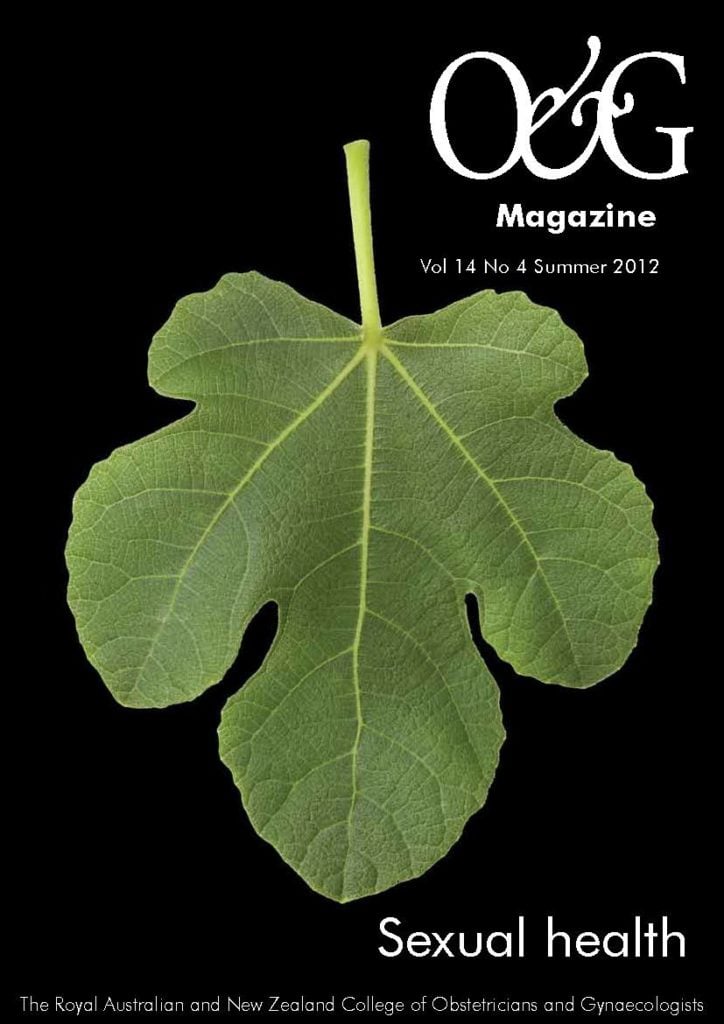Q&a attempts to provide balanced answers to those curly-yet-common questions in obstetrics and gynaecology for the broader O&G Magazine readership including Diplomates, Trainees, medical students and other health professionals.
Q
What should a general gynaecologist know about anti-Müllerian hormone and should anti-Müllerian hormone be part of the general workup for any subfertile couple?
a Anti-Müllerian hormone (AMH) is a dimeric glycoprotein that is a member of the transforming growth factor-beta family. The gene is located on the short arm of chromosome 19 (19p13.3).
Where is anti-Müllerian hormone produced?
Anti-Müllerian hormone is gonadal in origin. In the female, AMH is produced by the granulosa cells of the antral follicle. It is produced by testicular Sertoli cells in males.
What is the function of anti-Müllerian hormone?
In the female, AMH has been implicated in the recruitment of primordial follicles and FSH-sensitive follicles in the early antral stage. The current theory of female oogenesis dictates a peak of approximately seven million primordial follicles at 16 to 28 weeks of gestation, which are rapidly lost in the prenatal period, culminating in a total oocyte count of less than three million at birth. This loss, by poorly defined mechanisms, continues inevitably until puberty, which commences with an oocyte count of less than one million. Folliculogenesis, the transition of the primordial to the ovulatory follicle, occurs over a period of approximately 290 days, of which only the final weeks are dependent on follicle stimulating hormone (FSH). As such, AMH levels are undetectable at birth and rise rapidly at puberty in the female. AMH levels then decline over the reproductive lifespan, paralleling the number or antral follicles and, by association, the remaining pool of primordial follicles.
In the embryo, AMH plays a critical role in sexual differentiation. AMH mediates the regression of the Mullerian (paramesonephric) ducts during male fetal development.
In males, AMH levels are high in the fetal and postnatal periods. AMH levels drop at puberty and are maintained at low levels throughout adulthood. AMH function is poorly defined in adults, but has been implicated in testicular function, including spermatogenesis.
How is anti-Müllerian hormone measured?
Anti-Müllerian hormone levels are determined by serum samples. In the female, there appears to be some variation in the menstrual cycle and suppression with oral contraceptive use, though this is not normally clinically significant. There are substantial assay variations and practitioners should be familiar with the methodology and reference ranges of their chosen facility. Diagnostic testing in the asymptomatic patient should be accompanied by pre-test counselling, with an understanding of what the result means and how this would be used to guide management.
How is the anti-Müllerian hormone measurement used?
Female reproduction
Anti-Müllerian hormone levels correlate with the pool of antral follicles and, by association, the total pool of primordial follicles. AMH levels correlate with the total antral follicle count (AFC), an ultrasound assessment of the number of specific antral follicles in the early follicular phase of the ovarian cycle. These two tests have largely surpassed other tests of ovarian reserve, such as early follicular phase estimations of oestradiol or FSH.
In general, reduced ovarian reserve has been variably associated with a limited reproductive life span (time to conception), reproductive performance (ovarian response) and reproductive success (as defined by fertilization or clinical pregnancy rates), as well as early menopause.
The AMH measurement can therefore guide:
- Reproductive timespan. The estimation of the reproductive timespan of a patient is a difficult and perilous extension of the AMH assessment. This is even more important by the
‘screen’ detected low AMH, that is, a low AMH in a patient without clinical infertility. At any given age, AMH levels follow a parametric distribution, with a minority of patients in the upper and lower centiles of the distribution. The interpretation of the AMH should therefore occur with the aid of an assay specific nomogram. In the ‘screen’ detected population, interpretation of the AMH is complicated by the limited correlation of AMH levels with other reproductive parameters, such as reproductive success and performance. While it is tempting to correlate a low AMH with a limited reproductive timespan, the evidence for this in screen detected populations is limited and the AMH must be interpreted within the reproductive context of the patient. In this population, there is a paucity of evidence to guide testing intervals, the role of assisted reproduction and fertility preservation. Management options should be individualised in the context of an informed decision-making process. In patients presenting with infertility, a low AMH may guide the practitioner to recommend more efficacious treatment in an expedited timeframe. - Reproductive success. A literal interpretation of the theory of oogenesis predicates poor reproductive outcomes with a reduction in the total oocyte pool, as the most competent oocytes are lost early in the reproductive lifespan. There is some evidence to support reduced fertilisation rates, reduced implantation and increased pregnancy loss in infertile patients with reduced AMH levels.
- Reproductive performance. AMH levels can be used to predict poor and excessive ovarian response to stimulation in assisted reproduction. Low AMH levels predict cycles that require higher doses of FSH and lower oocyte yields at the time of retrieval. Similarly, a high AMH correlates with an increased risk of ovarian hyperstimulation syndrome. For this reason, AMH assessment is routinely performed in assisted reproduction in Australia.
- Ovulatory function. AMH levels are useful in the assessment of menstrual disturbances and amenorrhoea. For example, a high AMH is associated with conditions such as polycystic ovary syndrome (though this is not part of the diagnostic criteria) while an unrecordable AMH may be associated with primary ovarian failure. Unfortunately, some conditions, such as long standing hypogondadotropic hypogonadism may also be associated with a low AMH. Importantly, the AMH level alone is not diagnostic conditions such as premature ovarian failure.
- Fertility preservation. More recently, AMH levels have been used to assess and guide the impact of chemotherapy or destructive procedures on ovarian reserve.
Male reproduction
In the paediatric population, AMH is helpful in assessing testicular function, obviating the need for dynamic testing in the assessment of pubertal disorders. The role of AMH is limited in the assessment of adult male fertility.
Disorders of sexual differentiation (DSD)
Anti-Müllerian hormone assessment may be useful in the assessment of DSD, where it may be used to assess gonadal function.
Tumour markers
Anti-Müllerian hormone levels increase in some neoplastic conditions, such as granulosa cell tumours, analogous to inhibin B. AMH may therefore be used in both diagnosis and therapeutic follow up.
Conclusion
Anti-Müllerian hormone plays an important role in male and female reproductive function. AMH levels need to be interpreted within the reproductive context of each patient. In assisted reproduction, AMH levels correlate well with specific reproductive outcomes.





Leave a Reply